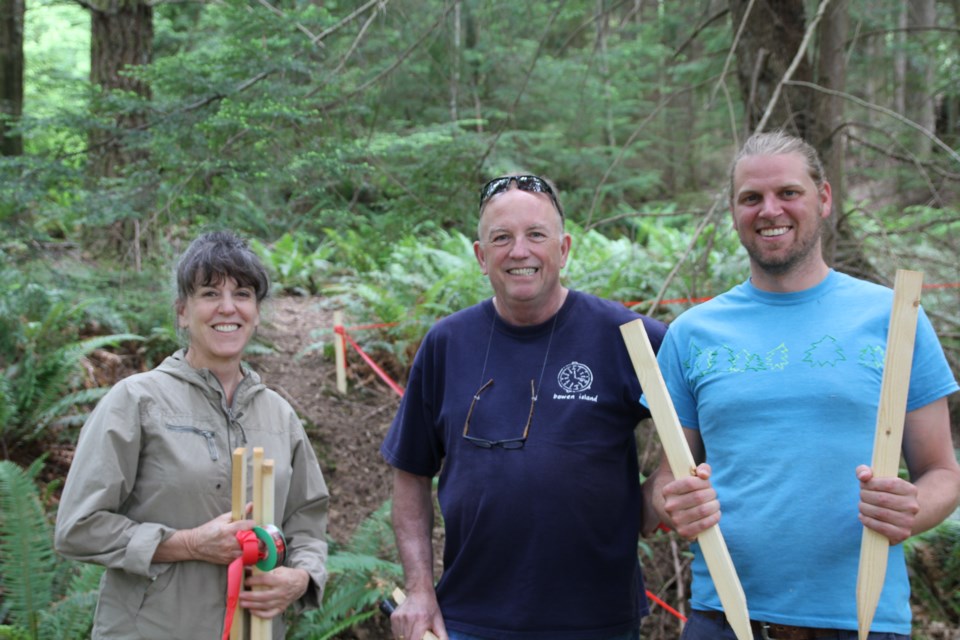“This is the sunniest patch of land, and technically the most arable,” explained garden designer Wynn Nielsen, surrounded by a small group of Bowen Islanders. “But the moment you irrigate this, the horsetails are just going to take-over.”
This sunny spot in the Alder forest across the road from Grafton Lake likely goes un-noticed by most Bowen Islanders, but this past Sunday, forty or so islanders got together to think (and dream) hard about the land.
“It’s church,” said Chris Corrigan, co-facilitator of the workshop, put on by developer John Reid. “That’s what talking about the land is for us here on Bowen.”
Reid told participants that the five acres of land across from the lake, zoned as part of the Agricultural Land Reserve (ALR), should celebrate the ALR, and “create a reason to live here.”
This is just one of many sessions on the land that Reid has held with Islanders since October, with the aim of “growing Bowen mindfully,” by not only creating housing that is more affordable than what currently exists, but also by protecting the watershed, preserving wildlife corridors and public access, and supporting the local economy.
A handful of participants at this weekend’s workshop were already familiar with the land and acted as initial guides to it. Following the first walk, participants split into groups of four armed with sticky notes, markers and instructions by facilitator Edward Wachtman to write down every possibility that came up on the post-its.
By the second walk, several hours later, ideas for community-oriented education spaces, ways to put livestock to use, orchards, tool-libraries and much more started taking shape as participants set out onto the land armed with wooden stakes and flagging tape. That second walk led to further discoveries, and a group conversation afterwards brought the ideas together towards a more cohesive vision.
The area where Wynn Nielsen pointed out the horsetails was deemed as a good spot for community gardens with raised beds.
“Outside of that horsetail-free zone,” explained Tamsin Miley. “We could have a goat-moat. Goats could graze and enjoy eating all of the horsetails.”
Will Husby told the group that he walked the stream on the land and noticed a number of mini “beauty spots” where people could sit quietly, or that might be perfect for children to play.
When Maureen Nicholson brought up the fact that five acres is in fact not endless land, and that hard decisions about how it will be used are going to have to be made, Husby concurred.
“This site can become a model for a neighbourhood agricultural node that could be replicated elsewhere,” he said.
“Neighbourhood agriculture fits in with the idea of tackling climate change, neighbourhood by neighbourhood,” Nicholson added.
The potential benefits mentioned from the development of this land as a celebration of the fact that it is part of the ALR were seemingly endless: more summer jobs for youth could be created; it could become a hub for Bowen farmers; it could improve the accessibility of locally grown food for everyone on Bowen; more community gathering spaces could be created; micro-industries generated, and much more.
John Reid says this is step two in the community engagment process for these lands. The first was focused on figuring out what lands around the lake should be included in a nature preserve. This second stage will be complete once facilitators Chris Corrigan and Edward Wachtman complete a summary of Sunday’s workshop. The third will be about creating a conversation on a housing development in the area, and possibly some sort of wellness retreat.
He adds that he hopes to have a proposal to council by late September, 2015.



